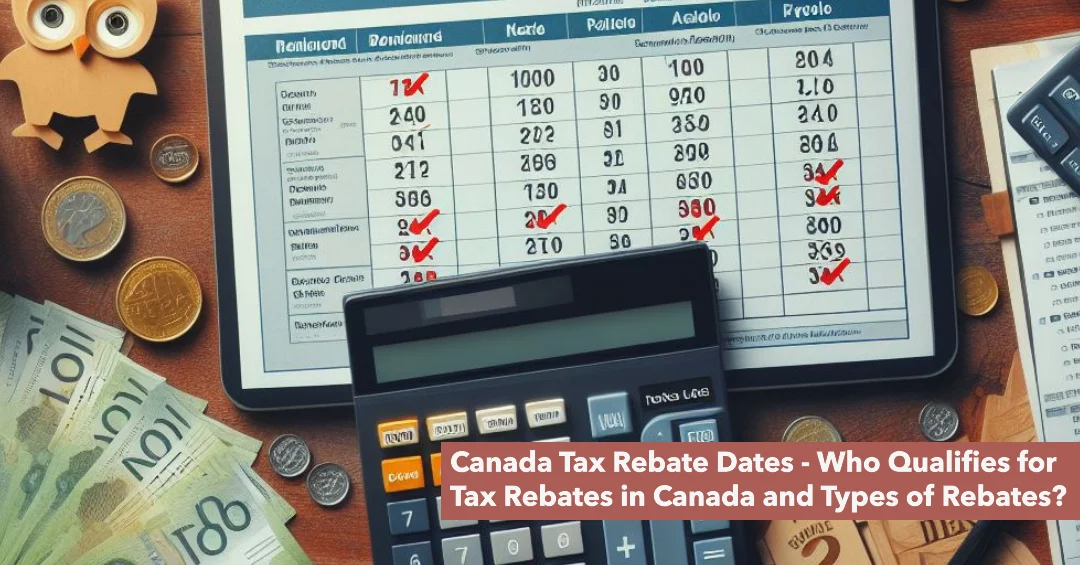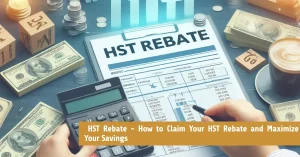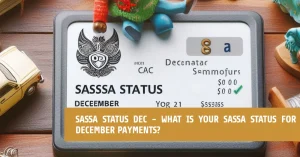For Advertising Contact Us
Canada Tax Rebate Dates – Who Qualifies for Tax Rebates in Canada and Types of Rebates?

Rebate dates are eagerly awaited by many Canadians who are eligible to receive money back from the government. Understanding who qualifies for tax rebates in Canada and the different types of rebates available is crucial for maximizing your financial benefits. From the disability tax credit to the Canada Child Benefit, there are various opportunities for individuals and families to receive rebates on their taxes. Stay informed and make sure you are taking advantage of all the tax credits and benefits that you are entitled to in Canada.
Qualifying for Tax Rebates in Canada
General Eligibility Criteria
Your eligibility for tax rebates in Canada depends on various factors such as your income, age, marital status, and specific expenses you’ve incurred during the tax year. To be eligible, you must be a resident of Canada for tax purposes, file your taxes on time, and not have any outstanding debt with the government.
Key Factors Affecting Qualification
Now, when it comes to qualifying for tax rebates in Canada, key factors such as your income level, family status, and specific deductions claimed play a crucial role. If you have dependents, such as children or elderly parents, you may be eligible for additional tax credits. Assume that certain rebates are also determined based on where you reside in Canada and the cost of living in that region.
If
If you are a low-income earner, you may qualify for certain tax rebates designed to provide financial relief. Additionally, individuals with disabilities or certain medical conditions may be eligible for special tax credits and rebates. Assume that these factors are carefully assessed by the Canada Revenue Agency to ensure fair distribution of rebates.
Types of Tax Rebates in Canada
The Canada Tax Rebate Dates provide various types of rebates to individuals and businesses, aiming to stimulate economic growth and support specific sectors of the economy. The government offers tax rebates as incentives to promote certain activities or investments and to lighten the tax burden on eligible citizens and corporations. There are different types of rebates available, each with its own criteria and requirements for qualification. It is crucial to understand the various types of tax rebates in Canada to take advantage of potential savings and benefits.
Personal Income Tax Rebates
Clearly, personal income tax rebates are designed to provide financial relief to individuals who fall within specific income brackets or meet certain criteria. These rebates can come in the form of tax credits, deductions, or refunds, depending on the individual’s circumstances. It is crucial for taxpayers to stay informed about the eligibility requirements and application procedures to ensure they receive any potential rebates they are entitled to.
Business Tax Rebates
If your business is operating in Canada, you may be eligible for various business tax rebates that can help reduce your tax liability and improve your bottom line. These rebates are typically offered to incentivize certain business activities, such as research and development, job creation, or investments in designated regions. It’s crucial for businesses to explore the available rebates and understand the specific criteria to take advantage of potential tax savings.
For instance, businesses that invest in eligible research and development activities may qualify for the Scientific Research and Experimental Development (SR&ED) tax credit, which can provide substantial financial benefits. By leveraging these opportunities, businesses can not only reduce their tax burden but also drive innovation and growth within their organizations.
| Rebate Type | Description |
| Personal Income Tax Rebates | Designed for individuals to reduce tax burden |
| Business Tax Rebates | Offered to businesses to stimulate economic growth |
| Industry-Specific Rebates | Targeted at certain sectors for development |
| Regional Development Rebates | Encouraging investments in specific regions |
| Green Initiatives Rebates | Promoting environmentally friendly practices |
Though navigating the various types of tax rebates can be complex, it is crucial for individuals and businesses to take advantage of available opportunities to maximize savings and benefits.
Step-by-Step Guide to Applying for Rebates
Preparing Your Documentation
| Step 1: Gather all necessary paperwork | Step 2: Organize your documents for easy reference |
| Step 3: Check for any additional requirements specific to the rebate you are applying for | Step 4: Make copies of all documents for your records |
Submission Process and Deadlines
With the required documentation in hand, you are now ready to proceed with the submission process. One important step is to ensure you meet the necessary deadlines for submitting your rebate application. Make sure to accurately fill out all necessary forms and double-check your submission before sending it off.
Guide: When submitting your rebate application, be sure to keep copies of all documents and any correspondence with the tax authorities. It is crucial to adhere to the deadlines provided to avoid missing out on potential rebates. Be aware of any specific instructions or requirements for each rebate, as failure to meet these criteria could result in delays or disqualification from receiving the rebate.
Tips for Maximizing Your Tax Rebates
Once again, maximizing your tax rebates is crucial to ensure you get the most out of your tax return. To make sure you are maximizing your tax rebates, consider the following tips:
- Keep detailed records of all your expenses throughout the year.
- Take advantage of all tax credits and deductions you qualify for.
- File your taxes on time to avoid penalties and maximize your refund.
- Consider consulting with a tax professional to ensure you are taking advantage of all available rebates.
Recognizing these tips and implementing them into your tax filing process can help you maximize your tax rebates and get the most out of your tax return.
Pros of Timely and Accurate Applications
The sooner you file your taxes accurately and on time, the sooner you can receive any tax rebates you are entitled to. Timely and accurate applications also reduce the risk of errors that could delay your refund.
Cons of Common Mistakes and Oversights
An important consequence of common mistakes and oversights in your tax return is the potential delay in receiving your tax rebates. Inaccurate information can result in penalties or even an audit, causing unnecessary stress and financial burden.
Accurate record-keeping and attention to detail are key to avoiding common mistakes and oversights in your tax return. Failing to report income, claiming ineligible deductions, or making calculation errors can all result in serious consequences such as delays in receiving your refund or even legal ramifications. Seeking professional assistance when in doubt can help you navigate through the complexities of the tax system and ensure you maximize your tax rebates.
To wrap up
Now that we have explored the various tax rebate dates in Canada and the criteria for qualifying for tax rebates, it is evident that tax rebates can provide financial relief to eligible individuals and families. Whether you are a low-income earner, a senior citizen, a student, or a parent, there are different types of rebates available to help reduce your tax burden. By staying informed about the eligibility criteria and deadlines for tax rebates in Canada, you can ensure that you take advantage of these opportunities to maximize your savings and achieve financial wellness.



